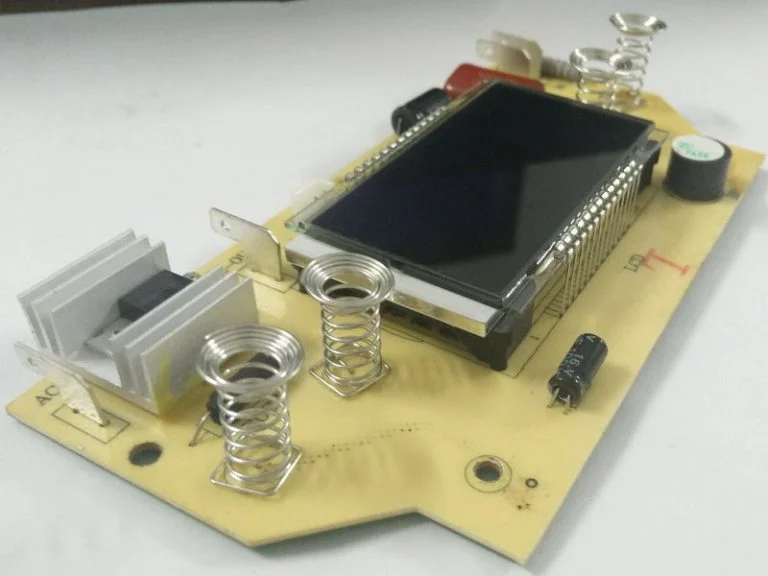
What are Single Sided PCBs?
Single sided PCB, as known as 1 layer PCB, which is a printed circuit board with only one copper layer of conductive material above the substrate. And also the electronic components mounted on one side of the board and the conductive track connected on the other side. So,it is called the 1 layer printed circuit board, too.
Due to that there is only 1 copper conductive layer, which is easier in PCB manufacturing process and lower cost than double sided PCB boards or multilayer circuit boards, therefore, these types of boards are commonly used in a wide variety of electronic devices with variety of applications, including: camera systems, printers, radio equipment, calculators, and much more.

Single Sided PCB
Track back it’s initial story, the first single printed circuit board was made in the USA In the 1950s.
Know about Single Sided PCB Stack Up
A single sided PCB design composed by conductive and insulating layers.
In a single layer copper PCB stack up, a single copper conductive layer of copper tracks next to a substrate.
When using such a printed circuit board, an electric component connects to one side of the board. On the other hand, the other side of the circuit board shows the entire etched circuit tracks.
The stack-up design in a single copper layer PCB helps you to construct a stronger electric circuit through layers of PCB board.
Another thing is that it helps the electronic designer to minimize the circuit’s radiations.
What is the Single Side PCB Layers
Commonly, the single sided PCB manufacturing process is very simple to only use the layers of conductive and non-conductive materials.

Substrate material:
Copper Layer:
Similar as multilayer PCB board, different boards of single sided PCB also can have different copper thicknesses. Such as 1oz, 2oz, 3oz, etc.
The Reason to Choose Single Sided PCB Boards
Some crucial advantages determine that most electronic designer love to use them as a PCB design:
The Universal Applications
Single layer PCB has Universal Applications. Mostly, you can use them in simple or even in complex devices such as:
Design Suggestion that Affect the Cost
The physical design and manufacturing process of a single layered PCB determine its cost mostly. Usually, the single sided PCB cost depends on the following factors:
Design Suggestion that Affect the Cost
The physical design and manufacturing process of a single layered PCB determine its cost mostly. Usually, the single sided PCB cost depends on the following factors:





